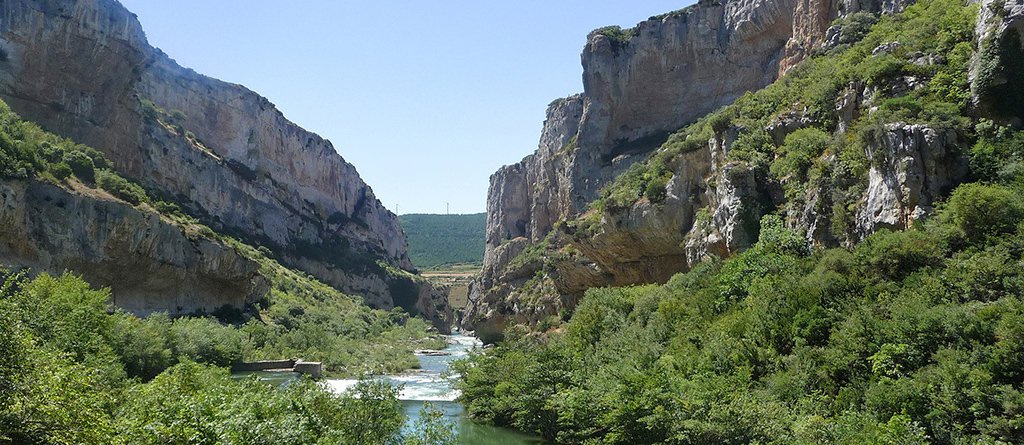 Photographs provided by the Government of Navarra
Photographs provided by the Government of Navarra
THE LUMBIER AND ARBAIUN GORGES
In the Lumbier and Arbaiun Gorges, you can feel the force of Nature. You will be struck by the power of the water and the erosion which, over millions of years, has managed to carve these ravines in the mountain. They are inaccessible spots with vertical walls, deep rivers, rocky places furrowed with cracks and caves, the refuge of many animals and birds. The griffin vulture, bearded vulture, hawks and kites predominate. It is not surprising that the Arbaiun Gorge has been declared a Special Area for the Protection of Birds.
Leave Pamplona on the Zaragoza-Madrid road and turn off onto the N240 Jaca – Huesca road. After the Loiti mountain pass, turn left onto the N150 and, three kilometres further on you will come to the turning to the Lumbier Gorge.
The defile is just over a kilometre long, there are 40 hectares of Nature Reserve and the water has carved 130 metres down into the hard limestone rocks. The passageway is narrow at the entrance and exit, whilst it is wider in the middle section. Apart from the brave rafters, transporting wood downstream, the place was inaccessible. Until the fifties, the “Irati” train passed through the gorge through two tunnels carved into the mountains. Now the old train route serves as a path through the gorge. You will find a 16C ruined bridge which, according to legend, was built by the devil.
To visit Arbaiun, take the N178 Lumbier road and when you reach Domeño, go towards Usún. Leading from the bridge of Usún there is a very narrow path, 3km long, cut into the rock and which was the water channel to Lumbier.
Arbaiun is a Nature Reserve, with 1,164 hectares. The river Salazar has cut a 6 kilometre long, 385 metre deep and 550 metre wide canyon. It has a curious structure: the top part is exceedingly vertical with sheer walls of hard limestone rock whilst the lower part is softer, of a sandier limestone which is less resistant and permeable, making it easier to wear away.
There is a great variety of vegetation, predominantly oaks and holly oaks, beeches, kermes oaks, gall oaks and boxwood.







